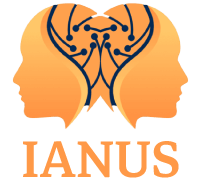IANUS partners’ research on “Reconnaissance” is part of WP2, the first substantial work package in the IANUS project, which is predicated on the maxim “those who ignore history are condemned to relive the past”. The objective was to explore and map existing research and propositions on the drivers of trust and distrust in science, technology, and innovation.
The reconnaissance reviewed recent and current EC-funded studies with a focus on trust; the academic literature on theories of trust, and developments in policy and science communication. Case studies of three contrasting examples of STI – AI and social media, climate change and genome editing – were conducted and included relevant public opinion data from Eurobarometer and other surveys. These case studies laid the foundations for three expert stakeholder discussions.
The outcomes of the reconnaissance lay the foundations for the subsequent work packages of the IANUS project, which will focus on key mechanisms of trust; participatory methodology; ethics and governance; co-creation and social laboratories; processes to strengthen co-creation and the development and dissemination of recommendations to inspire and anchor trust in science, technology and innovation.
Some key findings
While the evidence of public opinion surveys shows that there is confidence and trust in science and scientists, the Mertonian description of the ethos of the scientific enterprise is subject to challenges in contemporary times. Investigative challenges for IANUS WP3 are (i) the growth of right-wing populism with its contempt for ‘expertise’ including scientists, (ii) the unintended consequences of neo-liberalism and the public accountability of research in the university sector, and (iii) the complexities characterizing the multi-level eco-system of science, technology and innovation.
Six themes of significance to the IANUS study arise from WP2.
1. Science and technology
Openness in science is vital, but some argue that science is increasingly less open and less transparent. Regulation and, with certain reasonable exceptions (security, privacy, etc), science itself must be open and transparent to citizens. The issue is not public trust in science but trust in the system that combines science and politics. To cultivate trust, intermediary institutions and the public should have a seat at the table, setting scientific agenda, for example, as in mission-oriented research and participatory foresight.
2. Science communication
Science communication has become more complex as the media environment moved from a single public sphere with limited communication channels and established science journalists to a multiplicity of channels and voices (of which the scientist’s is but one of the many). Communicating with public is a key aspect of transparency and accountability. However, scientists are sometimes over-confident and over-claiming in research proposals and in the reporting of findings; this accentuated by the mass media, for whom the newsworthy is the spectacular and not the mundane. The mundane, the everyday business of scientific enquiry, is messy, findings are provisional and uncertainty not uncommon.
3. Science and the political arena
In the recent decades there has been a shift in the reception of science in the left and right wings of politics. The 1970s were characterised by left-wing skepticism and calls for the democratising of science. In the 2020 it is the right wing that distrusts and entertains absurd ideas and conspiracy theories. With existential challenges such as Covid-19 and climate change, science has increasing relevance to public policy at a time when trust in governments is at a low ebb. As scientific advice is seen by some as a servant of party politics, it carries the risk of distrust by association. Open decision-making forums and/or bodies where scientists meet the key stakeholders are needed.
4. The public and science
The evidence shows that the concerns of the public focus less on scientific procedures and more on the products of science and technology e.g., GMOs and not rDNA. The deficit model – if only they knew more about science – is still a widely held depiction of the public. While there is evidence that the more knowledgeable tend to be more supportive of science, if the public are treated as toddlers they will, on occasions, throw their toys out of the pram. There is a need to treat the public as adults and to be realistic and transparent about benefits, risks and possible unintended consequences. Increasingly, changes are imposed upon the public; their agency denied. A lack of control of, for example, AI and uses of data creates uncertainty and declining levels of trustworthiness.
5. Changing University ecosystem
Universities are becoming profit (surplus) oriented businesses and subject to KPIs that may well have unintended and deleterious consequences for research integrity and quality. Conflicts of interest, industry collaborations, questionable research practices, and the reproducibility crisis highlight the need for urgent attention in both research-producing and research-funding organisations. Issues of scientific misconduct are not merely related to individual science but also to these systemic dimensions. It does not suffice to identify only the rotten apples in the barrel while ignoring the structural issues at play in the barrel’s design itself.
6. Values and ethics
There is a danger that research ethics have become a ‘tick box’ procedure in grant applications. Ethics outsourcing and ethical dumping are unacceptable. Societal values must be understood and inform regulation; it may be scientifically possible, but is it a world that people want to live in? While research ethics and ELSA – in its initial phases – concentrated on what not to do, RRI – responsible research and innovation – asked what scientists should do. But RRI as a framework lacks the collaboration between ethics, legal, and societal experts, focusing increasingly on six key principles, and less on the process dimensions of research and innovation.
